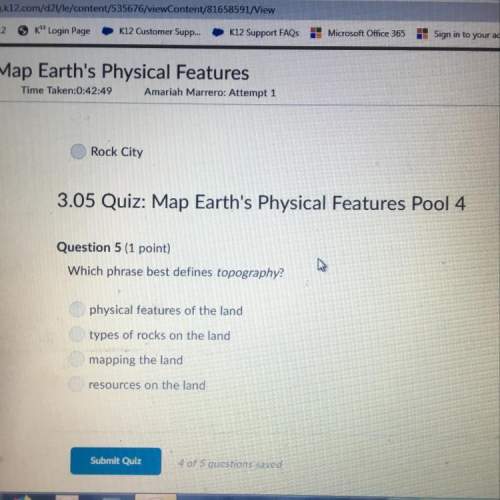
Chemistry, 21.04.2020 20:20 erbnichole
The table shows the relationship between the masses of two objects, the distance between the two objects, and the gravitational force between the objects. A 4-column table with 5 rows. The first column labeled Mass of Object 1 (kilograms) has entries 1, 2, 2, 3, 9. The second column labeled Mass of Object 2 (kilograms) has entries 1, 1, 2, 3, 3. The third column labeled Distance between Objects 1 and 2 (meters) has entries 1, 1, 2, 1, 3. The fourth column labeled Gravitational Force Objects 1 and 2 (Newtons) has entries 1 G, 2 G, 1 G, 9 G, 3G. Which conclusion is supported by the data in the table? An increase in the mass of an object causes the same decrease in the gravitational force. An increase in the distance between the objects causes the same decrease in the gravitational force. An increase in the distance between the objects causes a greater change in the gravitational force than the same increase in mass. An increase in the mass causes a greater change in the gravitational force than the same increase in the distance between the objects.

Answers: 2


Other questions on the subject: Chemistry


Chemistry, 22.06.2019 13:00, wbrandi118
Using the thermodynamic information in the aleks data tab, calculate the standard reaction free energy of the following chemical reaction: →+p4o10s6h2ol4h3po4s round your answer to zero decimal places.
Answers: 3

Chemistry, 22.06.2019 19:50, jakaylathomas11
A2.5% (by mass) solution concentration signifies that there is a 2.5 % (by mass) solution concentration signifies that there is blank of solute in every 100 g of solution. of solute in every 100 g of solution
Answers: 3

Chemistry, 22.06.2019 23:30, bxymichelle
With the largest atoms and the smallest number of valence electrons and with the smallest atoms and the greatest number of valence electrons are the most reactive. a. nonmetals; metals b. nonmetals; transition elements c. transition elements; metals d. metals; nonmetals
Answers: 3
You know the right answer?
The table shows the relationship between the masses of two objects, the distance between the two obj...
Questions in other subjects:









Social Studies, 24.12.2019 00:31




